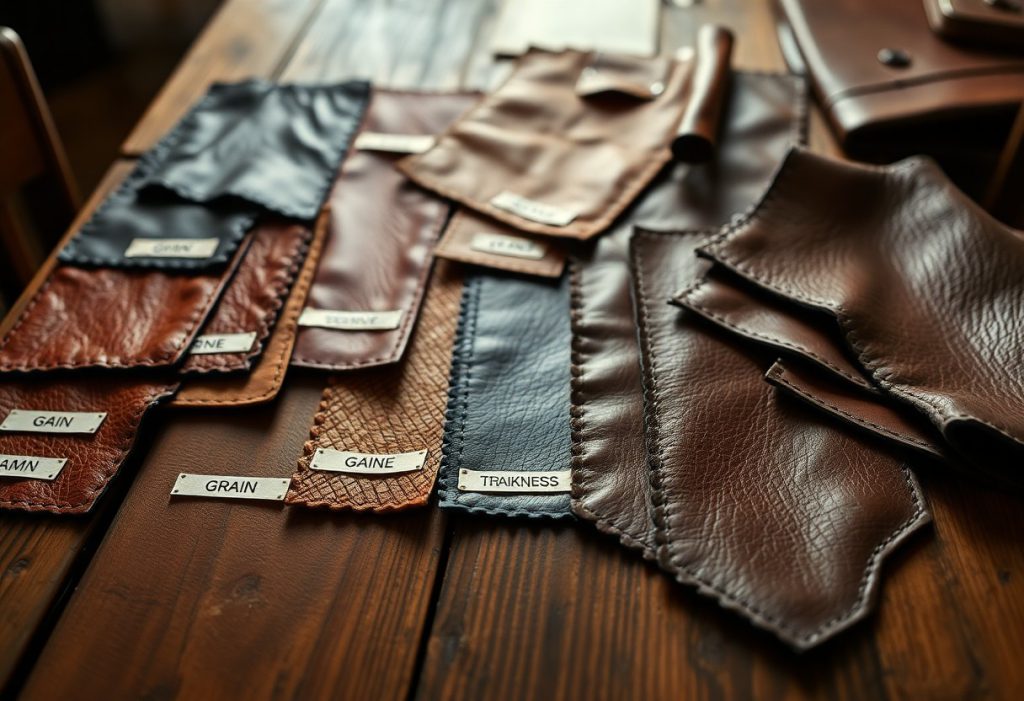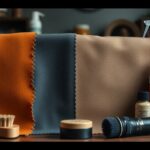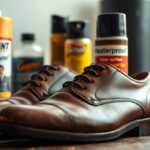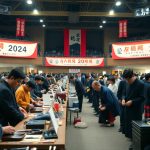Are you feeling inundated by the myriad of leather options available in the market today? This detailed guide is crafted specifically to help you make informed decisions regarding the diverse range of leather products. Each type of leather offers unique advantages designed for specific applications, from the luxurious softness of calfskin to the remarkable durability of full-grain leather. By understanding the specific characteristics and origins of quality leather, you can ensure your selection enhances the longevity and performance of your items. This guide is your go-to resource for selecting the most appropriate leather type for your needs, whether you're shopping for shoes, jackets, or a variety of accessories. Remember, choosing the wrong type of leather can lead to premature wear and unnecessary financial losses, so let’s explore the different types and their best uses.
Discover the Various Types of Leather and Their Distinctive Features
The extensive selection of leather types available today comes with a variety of distinct properties and applications, particularly in the area of footwear manufacturing. Here’s a comprehensive overview of the characteristics that set each leather type apart:
| Leather Type | Main Characteristics |
|---|---|
| Full-grain | Unmatched quality, natural surface, ultimate durability |
| Top-grain | Refined sanded surface, good durability, budget-friendly |
| Split leather | Lower layer of hide, less durable, economical option |
| Nubuck | Sanded top surface, soft and velvety texture |
| Suede | Soft, fuzzy finish with limited water resistance |
- Grain quality is a critical factor affecting the durability of leather
- Surface texture significantly impacts both the aesthetic appeal and maintenance needs of the leather
- Thickness is a vital consideration when determining the most suitable applications for different leather types
Get Acquainted with Common Leather Types for Better Decision-Making
When it comes to selecting the right leather for your specific needs, understanding the common varieties and their best applications is essential:
| Type | Best Use |
|---|---|
| Calfskin | Ideal for dress shoes and fine accessories |
| Cowhide | Best suited for boots and heavy-duty items |
| Pigskin | Perfect for affordable accessories |
| Sheepskin | Excellent for soft goods and linings |
| Goatskin | Commonly used for gloves and light accessories |
Dive into the World of Exotic Leather Types and Their Unique Attributes
The captivating realm of exotic leathers features a variety of unique characteristics and eye-catching appearances:
| Type | Properties |
|---|---|
| Alligator | Luxury items with exceptional durability |
| Ostrich | Noteworthy for its distinctive pattern and soft texture |
| Stingray | Known for extreme durability and unique texture |
| Python | Flexible with distinctive scales that add character |
| Lizard | Characterized by fine texture and delicate patterns |
Products made from bonded leather consist of leather fibers mixed with binding materials. Here’s what you should keep in mind:
| Aspect | Detail |
|---|---|
| Composition | Composed of leather fibers blended with binding agents |
| Durability | Generally less durable than genuine leather |
| Cost | A more affordable option for budget-conscious consumers |
| Usage | Commonly used in furniture and various accessories |
| Care needs | Requires minimal maintenance to retain appearance |
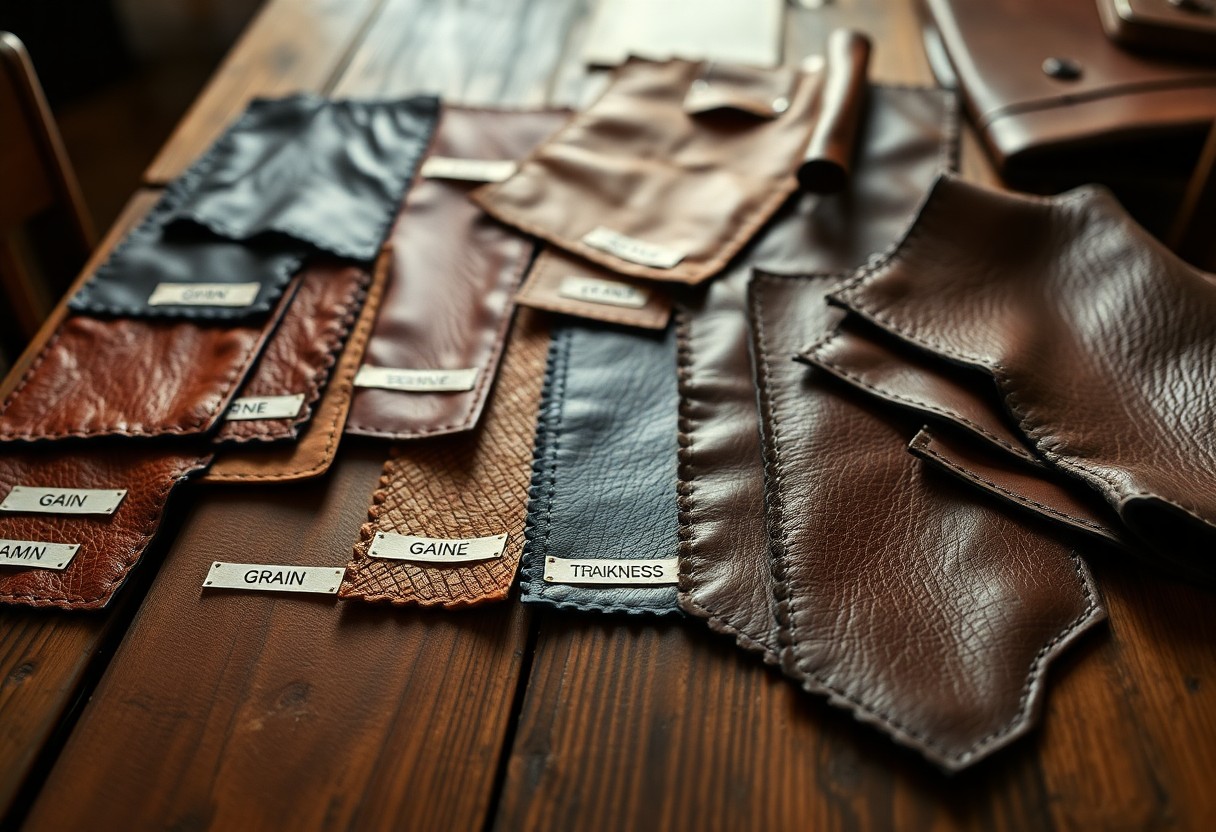
Key Factors That Determine Leather Quality and Longevity
Several key variables influence the quality of leather, including animal source, hide preservation, tanning process, and finishing techniques. The overall durability and aesthetic appeal of your leather products greatly depend on these elements working in harmony. By understanding these factors, you empower yourself to make educated choices when selecting leather items that will stand the test of time.
Evaluating Leather Quality by Considering the Animal Source
One of the most critical determinants of leather quality is the animal source. The unique characteristics of your leather are closely linked to the age, breed, and living conditions of the animal from which it is derived. For example, calfskin is renowned for its exceptional softness and flexibility, making it a favorite for high-end fashion items, compared to the more robust texture of full-grown cattle hide. Exotic leathers, such as those sourced from crocodiles, provide unique textures and unparalleled durability, making them highly sought after in luxury markets.
The Crucial Role of the Tanning Process in Leather Quality
The tanning process is vital as it transforms raw hides into functional leather through various chemical treatments. For instance, chrome tanning results in softer and more flexible leather, while vegetable tanning produces firmer and more natural leather options. The quality of the finished leather product is significantly influenced by the skill and precision involved in the tanning process. Furthermore, the duration and temperature control during tanning are essential to ensure that the leather maintains its integrity. Any inconsistencies in this process can lead to weak points and uneven coloring, whereas rushed procedures may yield leather that deteriorates quickly.
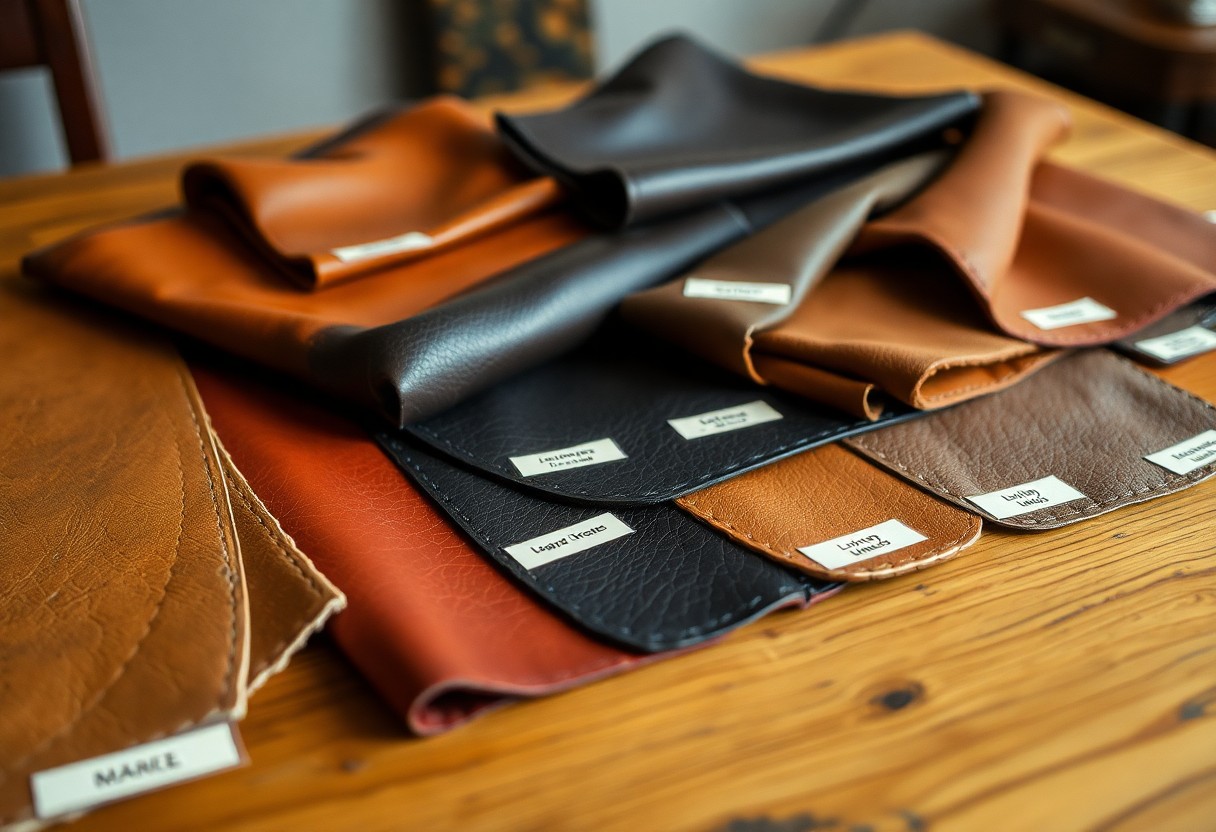
Crucial Tips for Identifying High-Quality Leather
When assessing leather quality, keep these essential guidelines at the forefront of your evaluation. Look for full-grain leather that showcases a consistent color and minimal surface imperfections. Inspect the grain pattern to confirm it appears natural and uniform. Quality leather typically has a pleasant aroma and should feel smooth to the touch. Additionally, the edges should be clean and well-finished. While price can often indicate quality, it should never be the sole factor in your decision-making process.
Conducting a Visual Inspection for Comprehensive Quality Assessment
When examining leather, pay attention to small details that can lead to significant differences in quality. Look for natural markings and avoid leather that displays artificial grain patterns. Your leather should exhibit a uniform color throughout, devoid of any noticeable discolorations or patches. The surface must be clear of excessive scratches or scars, as these flaws can compromise both the appearance and durability of the leather.
Utilizing Physical Testing Methods to Accurately Determine Quality
Quality testing can be performed through straightforward yet effective methods. For example, bending the leather allows you to evaluate its flexibility; observe any creasing patterns that may indicate inferior quality. Gently pressing your fingernail into the leather's surface should result in a temporary indentation, a hallmark of genuine leather. The leather should feel smooth and warm to the touch, rather than cold or plastic-like.
It is important to recognize that physical testing reveals a great deal about leather quality. When bending quality leather, it should not crack or develop white marks. Additionally, you can perform a water drop test to evaluate authenticity—genuine leather will absorb water temporarily instead of allowing it to pool on the surface. A flame test, to be conducted only by professionals, can also affirm the authenticity of the leather.
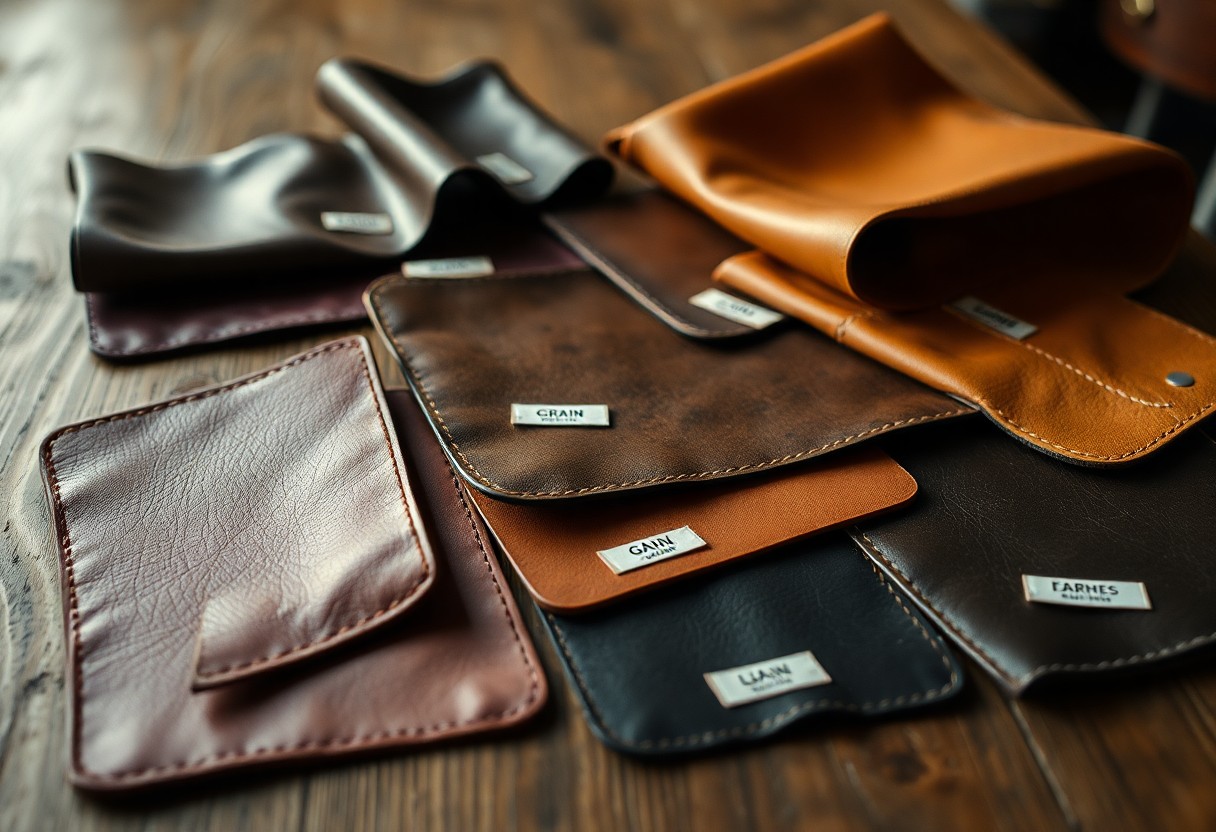
Your Ultimate Step-by-Step Guide to Effective Leather Care
Unlike synthetic materials, leather demands specialized care to maintain its quality and extend its lifespan. Regular maintenance is crucial for your leather items to prevent damage and sustain their aesthetic appeal over time.
| Basic Care | Advanced Care |
| Leather cleaner Soft brush Microfiber cloth |
Leather conditioner Weather protector Leather polish |
Effective Cleaning Techniques for Maintaining Leather Items
To clean your leather items efficiently, start with a dry brush to remove surface dirt. It’s essential to test any cleaning product on a small, inconspicuous area before proceeding. When applying leather cleaner, use a soft cloth and work in gentle circular motions, ensuring you do not saturate the leather with excessive water, which can cause damage.
Protective Measures and Proper Storage Techniques for Leather
When storing your leather items, careful consideration is paramount. Ensure they are kept in a cool, dry place that is shielded from direct sunlight to prevent fading. It’s advisable to apply leather conditioner every 3-6 months to avoid cracking and maintain the leather's natural flexibility and resilience.
The success of your leather care routine hinges on consistent application. Protect your items from water damage by utilizing a high-quality waterproofing product. Regular conditioning preserves the leather’s natural oils, while proper storage practices help prevent shape distortion and color fading.
Analyzing the Advantages and Disadvantages of Various Leather Types
To aid in making informed decisions regarding leather products, here’s a detailed comparison of various leather types and their characteristics. Each type possesses distinct advantages and limitations that can greatly influence their suitability for different applications.
| Pros | Cons |
|---|---|
| Full-grain leather: unparalleled durability | Higher price point, may show all natural marks |
| Top-grain leather: smooth finish, water-resistant | Not as durable as full-grain options |
| Split leather: affordable and flexible | Lower quality, less durable than others |
| Nubuck: sophisticated appearance, soft texture | Requires frequent maintenance to retain its look |
| Suede: versatile and comfortable | Prone to staining, challenging to clean |
Understanding Durability and Longevity Across Different Leather Types
There is a wide range in how various leather types age and wear over time. Full-grain leather can last for decades when properly maintained, while split leather may need replacement after just a few years of regular use due to its lower durability and resilience.
Financial Considerations When Choosing Leather
Leather prices can vary dramatically based on quality and source. Premium full-grain leather can be 5-10 times more expensive than split leather alternatives, making it crucial to consider your budget alongside the quality you desire.
It’s important to understand that investing in higher-quality leather typically yields better value over time, as these materials retain their appearance and structural integrity far longer than their lower-quality counterparts.
Tailoring Maintenance Requirements to the Quality of Leather
There is a clear connection between the quality of leather and its maintenance requirements. Top-grain and full-grain leathers usually need less frequent but more specialized care, ensuring that their unique characteristics and appearance are preserved for many years.
Furthermore, each leather type requires specific cleaning products and techniques. Your maintenance routine should be tailored to the type of leather you possess to guarantee optimal preservation and longevity of your valuable investments.
Exploring Common Uses and Applications of Leather in Everyday Life
Having gained insights into the various leather types, you’ll find that each variety serves distinct purposes based on its unique properties and durability levels. The chosen leather type can significantly impact the performance of the final product, making it essential to pair the correct leather with its intended use.
Fashion and Accessories: The Spotlight on Leather
In the fashion industry, applications range from luxurious high-end goods to everyday essentials. For instance, you’ll discover calfskin utilized in premium shoes and handbags, while exotic leathers such as crocodile and stingray are often featured in exclusive designer pieces. Your leather accessories may include wallets, belts, and watch straps, each crafted from specific leather types to ensure optimal functionality and style.
Furniture and Upholstery: Choosing for Longevity and Aesthetics
In the context of furniture, full-grain and top-grain leathers are the most highly regarded options. Upholstered pieces crafted from these durable materials are capable of withstanding daily use while developing a stunning patina over time, which enhances their visual appeal.
When selecting leather for your furniture, various considerations come into play. You’ll want to evaluate durability ratings, with full-grain leather lasting up to 25 years when properly cared for. The choice of leather not only impacts aesthetic quality but also longevity, ensuring that your investment endures through the years.
Industrial Applications: The Demand for High-Performance Materials
Industrial uses of leather necessitate high-performance materials. Specialized leather types are commonly found in automotive interiors, protective gear, and heavy machinery components, where durability and resilience are paramount.
To ensure optimal performance in these industrial applications, your leather choices must meet specific standards. Safety-rated leathers are utilized in protective equipment, while specialized treatments enhance resistance to heat, chemicals, and wear in demanding industrial environments.
Empowering Yourself to Make Informed Leather Selections
With the knowledge acquired from this guide, you are now equipped to make informed decisions about the various types of leather based on your unique requirements. Understanding the characteristics of leather enables you to select the ideal material for your footwear. From the versatility of calfskin to the exceptional properties of exotic leathers, you can now weigh durability, comfort, and style in relation to your specific needs. Each leather type provides distinct advantages, allowing you to align these qualities with your intended use. Whether you’re looking for rugged boots made from cowhide or elegant dress shoes crafted from calfskin, you can confidently choose the perfect leather to meet your preferences.
Frequently Asked Questions About Leather Types and Their Properties
Q: What sets calfskin apart from full-grown cow leather?
A: Calfskin is sourced from young cattle under one year old, offering a softer, more supple texture with finer pores. In contrast, cow leather comes from adult animals, resulting in a thicker and sturdier product with more prominent markings. Calfskin is often preferred for high-quality dress shoes, while cow leather is commonly used for work boots and more economical footwear options.
Q: What distinguishes shell cordovan among various leather types?
A: Shell cordovan is derived from the muscle membrane located beneath the skin of a horse’s rump. This unique leather displays distinct traits: it does not crease but instead forms rolls, features a dense shiny surface, and is exceptionally durable. The processing of this leather involves turning it inside out, setting it apart from conventional leather types.
Q: How do exotic leathers like crocodile and stingray differ in properties and applications?
A: Crocodile leather is soft, flexible, and harvested from the belly and sides of the animal, making it a luxurious choice that often requires CITES certification. Conversely, stingray leather is renowned for its extraordinary hardness and durability but can be more challenging to work with. Stingray shoes are typically crafted as wholecuts since the material allows for stitching only between its hard “pearls.”
The article Guide to the different types of leather characteristics and uses appeared first on My Shoes Finder
